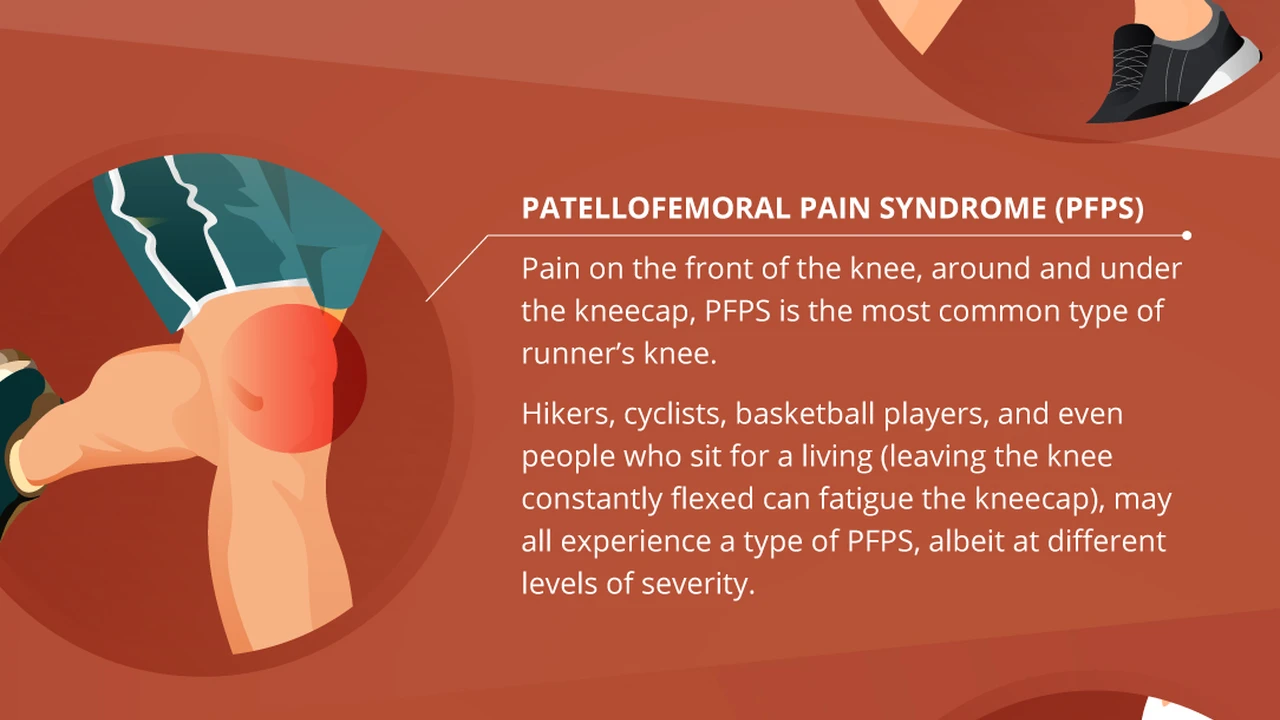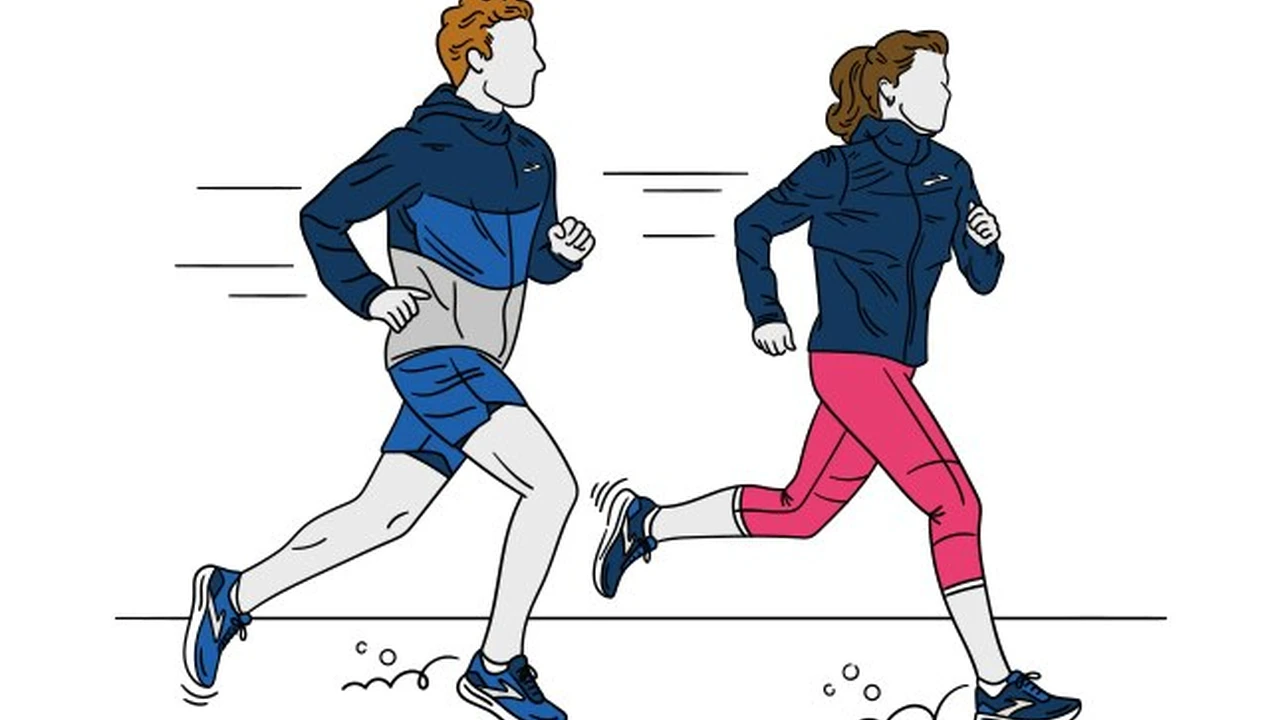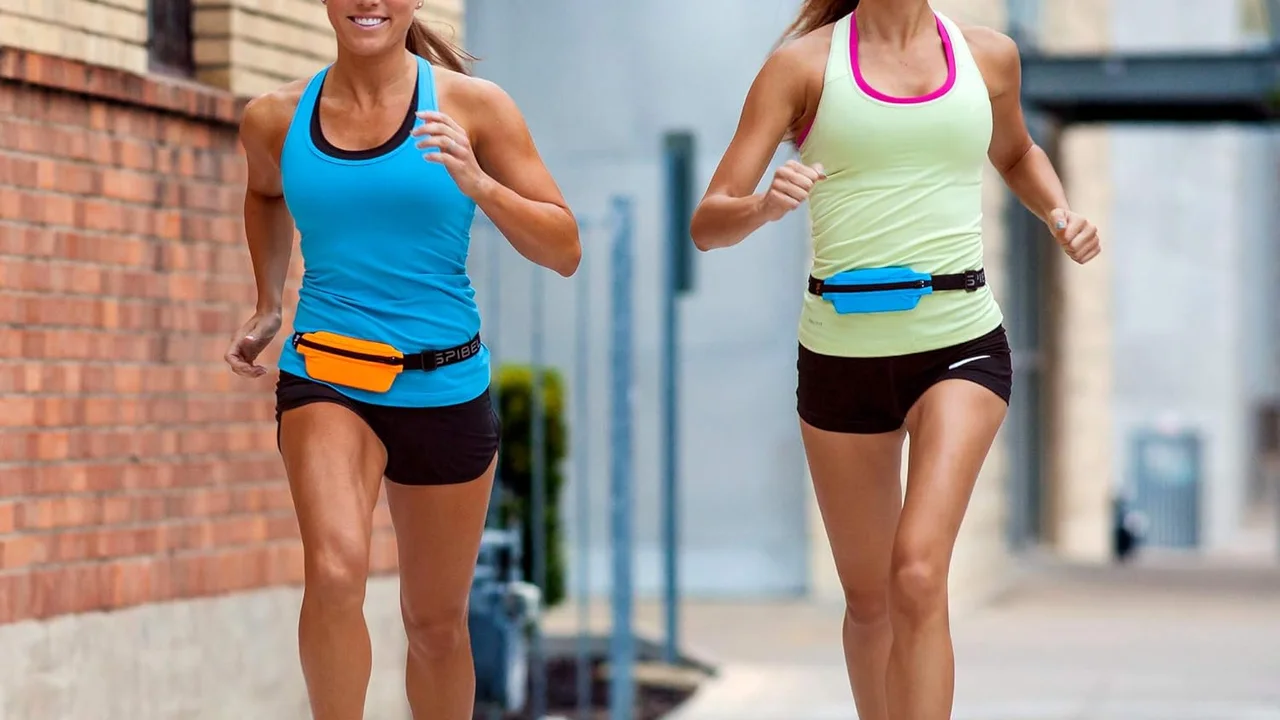Dealing with Runner's Knee: A Guide

Understanding Dealing with Injuries and Pain
Navigating the world of injuries and pain can feel like traversing a minefield. Whether you're an athlete pushing your limits, someone recovering from an accident, or simply dealing with the aches and pains of everyday life, understanding the landscape of injuries and pain management is crucial. This category aims to provide you with the knowledge and tools to effectively deal with various types of injuries and pain, empowering you to take control of your well-being.
We'll delve into the common causes of injuries, explore different pain management techniques, and discuss the latest advancements in treatment options. This isn't just about masking the symptoms; it's about understanding the root causes of your pain and developing a comprehensive strategy for long-term relief and recovery.
From sprains and strains to chronic pain conditions, we'll cover a wide range of topics to equip you with the information you need to make informed decisions about your health. We'll also explore the importance of preventative measures, such as proper warm-up routines, ergonomic adjustments, and lifestyle modifications, to minimize your risk of future injuries.
Article 1 Dealing with Runner's Knee A Guide
Runner's knee, also known as patellofemoral pain syndrome (PFPS), is a common ailment among runners and other athletes. This article provides a comprehensive guide to understanding, treating, and preventing runner's knee.
Article 2 [Placeholder Title: Lower Back Pain Relief Strategies]
Lower back pain is a widespread issue affecting millions worldwide. This article explores various strategies for relieving lower back pain, including exercises, stretches, and alternative therapies.
Article 3 [New Article Title: Comprehensive Guide to Managing Muscle Soreness and Recovery]
Understanding Muscle Soreness Delayed Onset Muscle Soreness DOMS Explained
Muscle soreness, particularly delayed onset muscle soreness (DOMS), is a familiar sensation for anyone who engages in physical activity. But what exactly is DOMS, and why does it occur? DOMS is the muscle pain, stiffness, and tenderness that develops 12 to 72 hours after strenuous or unaccustomed exercise. It's often mistaken for an injury, but it's actually a natural response to microscopic muscle damage.
During intense exercise, especially eccentric contractions (muscle lengthening under load), muscle fibers experience tiny tears. This triggers an inflammatory response, leading to the characteristic symptoms of DOMS. While DOMS can be uncomfortable, it's a sign that your muscles are adapting and becoming stronger.
The severity of DOMS varies depending on several factors, including the intensity and duration of exercise, the type of exercise, and individual differences in muscle fiber composition and recovery capacity. Some people are more prone to DOMS than others, and the same person may experience varying degrees of soreness after different workouts.
Understanding the mechanisms behind DOMS can help you manage it effectively and optimize your recovery process. It's important to distinguish DOMS from acute muscle soreness, which occurs during or immediately after exercise. Acute soreness is usually caused by the buildup of metabolic byproducts, such as lactic acid, and typically dissipates within minutes or hours.
Effective Strategies for Muscle Soreness Relief and Accelerated Recovery
While DOMS is a normal part of the adaptation process, it can hinder your training and performance. Fortunately, there are several effective strategies you can use to relieve muscle soreness and accelerate recovery.
Active Recovery Light Exercise for Muscle Soreness Reduction
Active recovery involves engaging in low-intensity exercise, such as walking, jogging, swimming, or cycling, to promote blood flow and nutrient delivery to the muscles. This helps to clear metabolic waste products and reduce inflammation, thereby alleviating muscle soreness.
Active recovery is more effective than passive rest because it stimulates the lymphatic system, which plays a crucial role in removing toxins and waste from the body. It also helps to maintain muscle flexibility and prevent stiffness.
The key to active recovery is to keep the intensity low. You should be able to comfortably hold a conversation while exercising. Avoid activities that exacerbate your muscle soreness or put excessive stress on your joints.
Foam Rolling Self Myofascial Release for Muscle Soreness
Foam rolling, also known as self-myofascial release (SMR), is a technique that involves applying pressure to specific muscles using a foam roller. This helps to release muscle tension, improve flexibility, and reduce muscle soreness.
Foam rolling works by breaking up adhesions and knots in the fascia, the connective tissue that surrounds muscles. This allows the muscles to move more freely and reduces pain and stiffness.
To foam roll effectively, slowly roll over each muscle group for 30 to 60 seconds, focusing on areas that feel tight or tender. Avoid rolling directly over joints or bones. You can also use other SMR tools, such as massage balls or lacrosse balls, to target smaller muscle groups.
Stretching Improving Flexibility and Range of Motion for Sore Muscles
Stretching is an essential component of muscle soreness relief and recovery. It helps to improve flexibility, increase range of motion, and reduce muscle stiffness. Stretching also promotes blood flow to the muscles, which aids in healing and repair.
There are two main types of stretching: static stretching and dynamic stretching. Static stretching involves holding a stretch for 15 to 30 seconds, while dynamic stretching involves moving through a range of motion.
For muscle soreness relief, static stretching is generally recommended. Focus on stretching the muscles that are sore or tight. Avoid overstretching or forcing the stretch, as this can worsen the soreness.
Hydration Staying Hydrated for Optimal Muscle Recovery
Hydration is crucial for muscle recovery. Water helps to transport nutrients to the muscles, remove waste products, and regulate body temperature. Dehydration can impair muscle function and exacerbate muscle soreness.
Aim to drink plenty of water throughout the day, especially before, during, and after exercise. You can also consume electrolyte-rich beverages to replenish the minerals lost through sweat.
The amount of water you need depends on several factors, including your activity level, climate, and individual differences. A general guideline is to drink at least half your body weight in ounces of water per day.
Nutrition Fueling Your Body for Muscle Repair and Growth
Nutrition plays a vital role in muscle repair and growth. Consuming a balanced diet that is rich in protein, carbohydrates, and healthy fats provides your body with the building blocks it needs to rebuild damaged muscle tissue.
Protein is particularly important for muscle recovery. It provides the amino acids that are used to repair and rebuild muscle fibers. Aim to consume 20 to 30 grams of protein after exercise.
Carbohydrates replenish glycogen stores, which are depleted during exercise. Choose complex carbohydrates, such as whole grains, fruits, and vegetables, over simple carbohydrates, such as sugary drinks and processed foods.
Healthy fats provide energy and support hormone production. Include sources of healthy fats, such as avocados, nuts, seeds, and olive oil, in your diet.
Sleep Prioritizing Sleep for Muscle Recovery and Repair
Sleep is essential for muscle recovery and repair. During sleep, your body releases hormones that promote muscle growth and repair damaged tissue. Lack of sleep can impair muscle function and exacerbate muscle soreness.
Aim to get 7 to 9 hours of sleep per night. Create a relaxing bedtime routine to help you fall asleep and stay asleep. Avoid caffeine and alcohol before bed.
Ice Baths Cold Therapy for Muscle Soreness Reduction
Ice baths, also known as cold water immersion (CWI), involve immersing your body in cold water (typically 50-59°F or 10-15°C) for a short period of time. This helps to reduce inflammation, constrict blood vessels, and numb pain, thereby alleviating muscle soreness.
Ice baths are most effective when taken within 30 minutes of exercise. Limit the immersion time to 10 to 15 minutes to avoid hypothermia.
While ice baths can be effective for reducing muscle soreness, they may also interfere with muscle adaptation. Therefore, it's important to use them judiciously and not rely on them as a primary recovery method.
Heat Therapy Warm Baths and Showers for Muscle Relaxation
Heat therapy, such as warm baths or showers, can also help to relieve muscle soreness. Heat promotes blood flow to the muscles, which helps to relax them and reduce stiffness.
Warm baths and showers are particularly beneficial for chronic muscle soreness. You can also use heat packs or heating pads to target specific muscle groups.
Avoid using heat therapy on acute injuries, as it can worsen inflammation.
Massage Therapy Professional Massage for Muscle Soreness Relief
Massage therapy can be an effective way to relieve muscle soreness and improve recovery. Massage helps to release muscle tension, improve blood flow, and reduce inflammation.
A professional massage therapist can use various techniques to target specific muscle groups and address underlying issues that may be contributing to your muscle soreness.
Consider getting a massage regularly to prevent muscle soreness and improve your overall well-being.
Specific Product Recommendations for Muscle Soreness Management and Recovery
In addition to the strategies mentioned above, there are several products that can help you manage muscle soreness and accelerate recovery. Here are some recommendations, along with their use cases, comparisons, and detailed information.
Foam Rollers Product Comparison Best Foam Rollers for Muscle Recovery
Foam rollers come in various shapes, sizes, and densities. Choosing the right foam roller depends on your individual needs and preferences. Here are some popular options:
* **High-Density Foam Roller:** Provides deep tissue massage and is ideal for experienced users. Examples include the TriggerPoint GRID Foam Roller and the RumbleRoller. * **Use Case:** Releasing tight knots and adhesions in large muscle groups, such as the quads, hamstrings, and back. * **Pricing:** $25 - $50 * **Low-Density Foam Roller:** Offers a gentler massage and is suitable for beginners or those with sensitive muscles. Examples include the OPTP PRO-Roller Soft Density Foam Roller and the AmazonBasics Foam Roller. * **Use Case:** Warm-up, cool-down, and gentle massage for sensitive areas. * **Pricing:** $15 - $30 * **Textured Foam Roller:** Features raised bumps or ridges that provide a more intense massage. Examples include the TriggerPoint GRID X Foam Roller and the Gaiam Restore Muscle Therapy Foam Roller. * **Use Case:** Targeting specific trigger points and breaking up stubborn adhesions. * **Pricing:** $30 - $60 * **Vibrating Foam Roller:** Combines foam rolling with vibration therapy to enhance muscle relaxation and reduce pain. Examples include the Hyperice Vyper 2.0 and the Theragun Wave Roller. * **Use Case:** Enhancing muscle relaxation, reducing pain, and improving circulation. * **Pricing:** $100 - $200When choosing a foam roller, consider your budget, experience level, and specific needs. Read reviews and compare different models to find the best option for you.
Massage Guns Product Comparison Best Massage Guns for Deep Tissue Massage
Massage guns are handheld devices that deliver rapid percussive therapy to the muscles. They can be used to relieve muscle soreness, improve circulation, and reduce pain. Here are some popular options:
* **Theragun Pro:** A high-end massage gun with adjustable speed, pressure, and attachments. * **Use Case:** Deep tissue massage, muscle recovery, and pain relief. * **Detailed Information:** Features a powerful motor, ergonomic design, and long battery life. * **Pricing:** $599 * **Hypervolt Plus:** A popular massage gun with a powerful motor, quiet operation, and multiple attachments. * **Use Case:** Muscle recovery, pain relief, and improved circulation. * **Detailed Information:** Features a pressure sensor, Bluetooth connectivity, and a long battery life. * **Pricing:** $399 * **TimTam Power Massager Pro:** A rugged massage gun designed for athletes and fitness enthusiasts. * **Use Case:** Deep tissue massage, muscle recovery, and injury prevention. * **Detailed Information:** Features a powerful motor, adjustable arm, and multiple attachments. * **Pricing:** $249 * **Renpho Rechargeable Handheld Deep Tissue Massager:** A budget-friendly massage gun with multiple speed settings and attachments. * **Use Case:** Muscle recovery, pain relief, and relaxation. * **Detailed Information:** Features a lightweight design, long battery life, and easy-to-use controls. * **Pricing:** $60Massage guns can be a valuable tool for managing muscle soreness and improving recovery. Consider your budget, needs, and preferences when choosing a massage gun.
Compression Gear Product Comparison Best Compression Socks and Sleeves for Muscle Recovery
Compression gear, such as compression socks and sleeves, can help to improve circulation, reduce muscle soreness, and speed up recovery. Here are some popular options:
* **CEP Compression Socks:** Medical-grade compression socks designed to improve circulation and reduce muscle fatigue. * **Use Case:** Running, cycling, and other endurance activities. * **Detailed Information:** Features graduated compression, breathable fabric, and a comfortable fit. * **Pricing:** $40 - $60 * **Pro Compression Marathon Socks:** Compression socks designed for marathon runners and other endurance athletes. * **Use Case:** Running, triathlon, and other high-impact activities. * **Detailed Information:** Features graduated compression, moisture-wicking fabric, and reinforced heel and toe. * **Pricing:** $50 - $70 * **Zensah Compression Leg Sleeves:** Compression sleeves designed to provide targeted support to the calf muscles. * **Use Case:** Running, cycling, and other activities that strain the calf muscles. * **Detailed Information:** Features graduated compression, moisture-wicking fabric, and a seamless design. * **Pricing:** $30 - $50 * **SB SOX Compression Socks:** Affordable compression socks suitable for everyday wear and light exercise. * **Use Case:** Travel, work, and light physical activity. * **Detailed Information:** Features mild compression, breathable fabric, and a comfortable fit. * **Pricing:** $15 - $25Compression gear can be a valuable tool for improving circulation, reducing muscle soreness, and speeding up recovery. Choose compression gear that fits properly and provides the appropriate level of compression for your needs.
Supplements Product Comparison Best Supplements for Muscle Recovery and Soreness Reduction
While a balanced diet is the foundation of good health, certain supplements can help to support muscle recovery and reduce soreness. Here are some popular options:
* **Creatine Monohydrate:** A well-researched supplement that can improve muscle strength, power, and recovery. * **Use Case:** Enhancing muscle performance and accelerating recovery after intense exercise. * **Detailed Information:** Increases muscle creatine stores, which provide energy for muscle contractions. * **Pricing:** $20 - $30 per container * **Branched-Chain Amino Acids (BCAAs):** Essential amino acids that can help to reduce muscle soreness and promote muscle protein synthesis. * **Use Case:** Reducing muscle soreness and accelerating recovery after exercise. * **Detailed Information:** Helps to prevent muscle breakdown and promote muscle growth. * **Pricing:** $25 - $40 per container * **Whey Protein:** A fast-digesting protein source that can help to repair and rebuild muscle tissue after exercise. * **Use Case:** Repairing and rebuilding muscle tissue after exercise. * **Detailed Information:** Provides essential amino acids for muscle growth and repair. * **Pricing:** $30 - $50 per container * **Turmeric Curcumin:** A natural anti-inflammatory compound that can help to reduce muscle soreness and improve recovery. * **Use Case:** Reducing inflammation and alleviating muscle soreness. * **Detailed Information:** Contains powerful antioxidant and anti-inflammatory properties. * **Pricing:** $15 - $30 per containerConsult with a healthcare professional before taking any supplements, especially if you have any underlying health conditions or are taking medications.
Preventing Muscle Soreness Practical Tips for Preventing DOMS
While muscle soreness is a normal part of the adaptation process, there are several things you can do to minimize its severity and prevent DOMS.
Warm Up Properly Preparing Your Muscles for Exercise
A proper warm-up is essential for preparing your muscles for exercise and preventing injuries. A warm-up should include light cardio, such as jogging or cycling, followed by dynamic stretching, such as arm circles, leg swings, and torso twists.
The purpose of a warm-up is to increase blood flow to the muscles, improve flexibility, and activate the nervous system. This helps to reduce the risk of muscle soreness and injury.
Cool Down Effectively Aiding Muscle Recovery After Exercise
A cool-down is just as important as a warm-up. It helps to gradually lower your heart rate and breathing rate, and it promotes blood flow to the muscles. A cool-down should include light cardio, such as walking or stretching.
The purpose of a cool-down is to remove waste products from the muscles and prevent muscle stiffness.
Progressive Overload Gradually Increasing Exercise Intensity
Progressive overload involves gradually increasing the intensity, duration, or frequency of your workouts over time. This allows your muscles to adapt to the increasing demands and reduces the risk of muscle soreness and injury.
Avoid making drastic changes to your workout routine. Instead, gradually increase the weight, reps, sets, or distance over time.
Proper Form Maintaining Correct Form During Exercise
Maintaining proper form during exercise is crucial for preventing injuries and muscle soreness. Proper form ensures that you are using the correct muscles and avoiding unnecessary stress on your joints.
If you are unsure about the proper form for a particular exercise, consult with a personal trainer or physical therapist.
Listen to Your Body Recognizing Pain Signals and Avoiding Overexertion
It's important to listen to your body and recognize the signs of overexertion. Pain is a signal that something is wrong. If you experience pain during exercise, stop immediately and rest.
Don't push yourself too hard, especially when you are starting a new workout routine or increasing the intensity of your workouts.
Conclusion Alternative Ending Maintaining a Proactive Approach to Muscle Health
Managing muscle soreness and optimizing recovery is an ongoing process. By understanding the mechanisms behind DOMS, implementing effective relief strategies, and prioritizing prevention, you can minimize muscle soreness, accelerate recovery, and maximize your training potential. Remember to listen to your body, adapt your approach based on your individual needs, and consult with a healthcare professional if you have any concerns. With a proactive approach to muscle health, you can enjoy a more active and pain-free lifestyle. Embrace the journey, learn from your experiences, and continue to refine your strategies for optimal muscle recovery and performance.
:max_bytes(150000):strip_icc()/277019-baked-pork-chops-with-cream-of-mushroom-soup-DDMFS-beauty-4x3-BG-7505-5762b731cf30447d9cbbbbbf387beafa.jpg)






